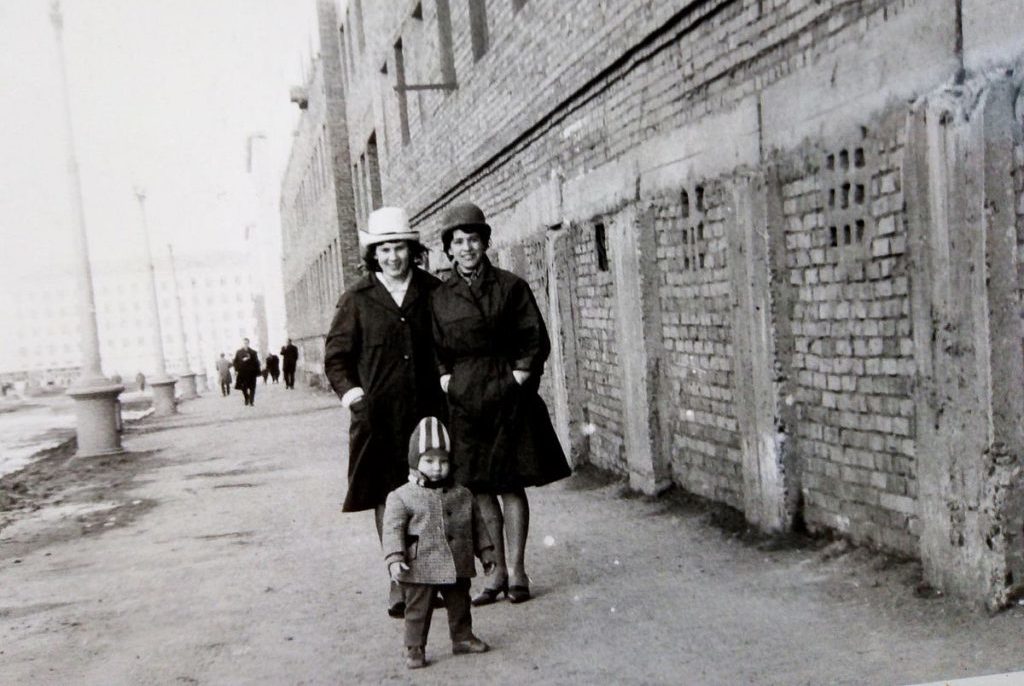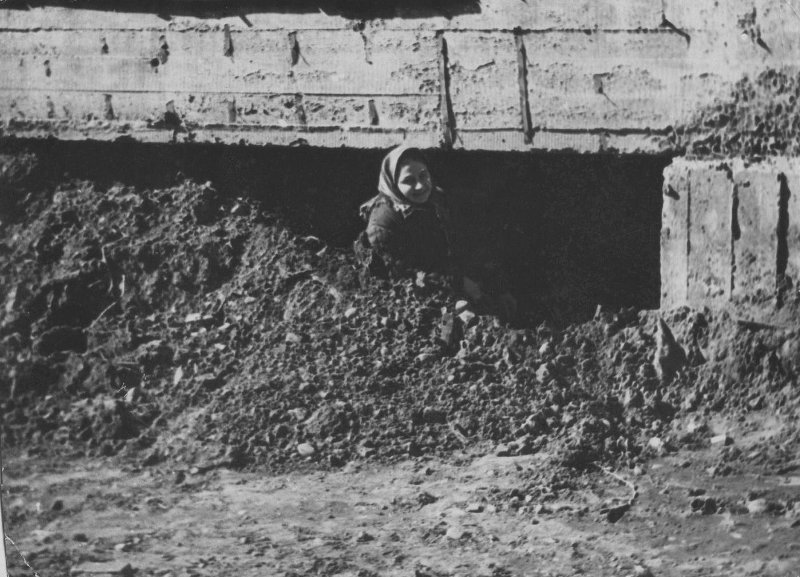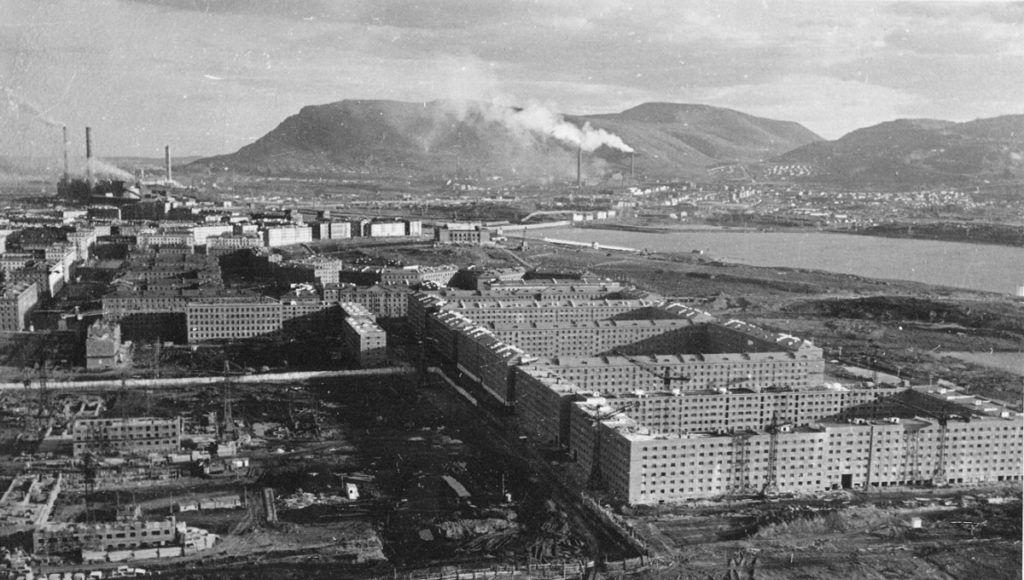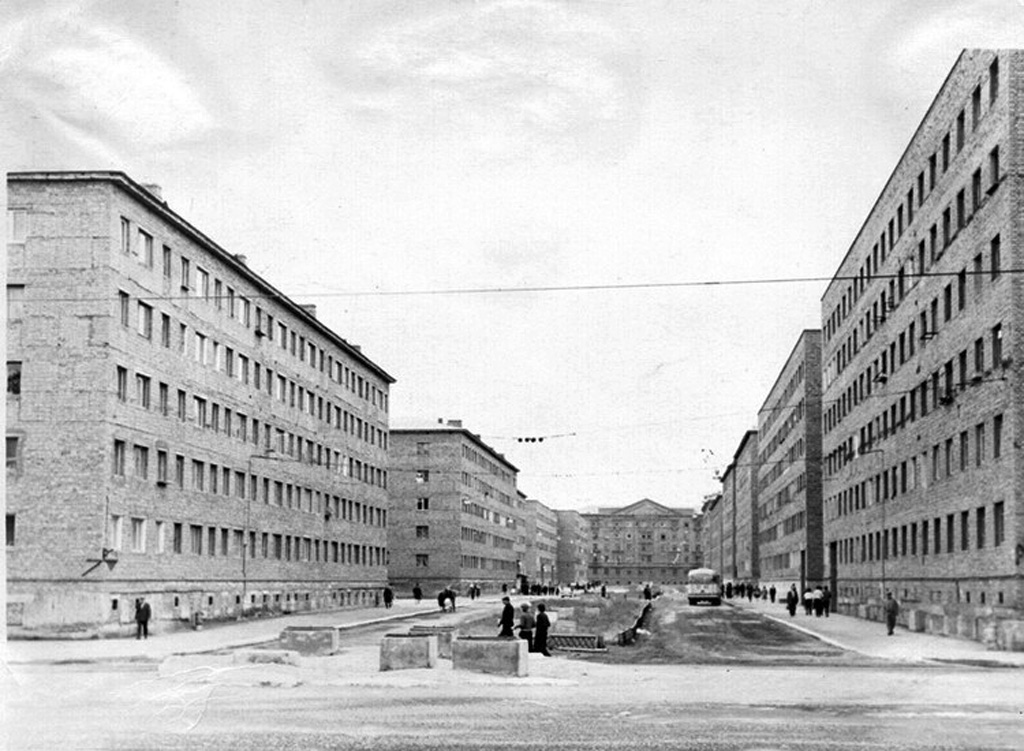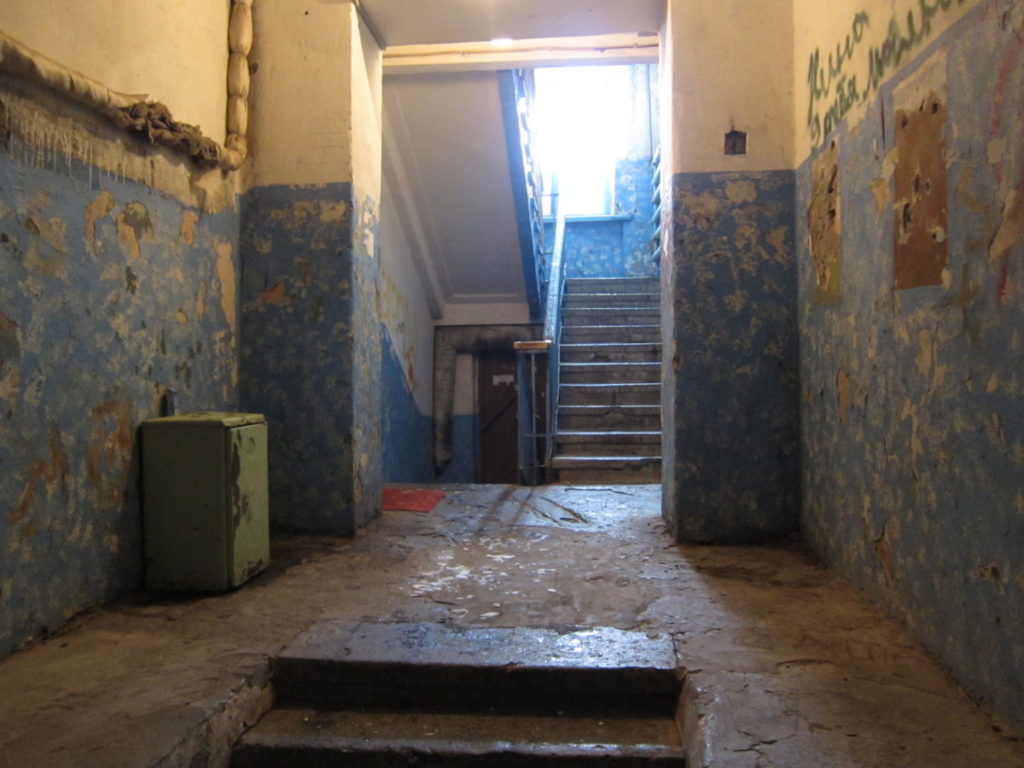#ARCTIC. #SIBERIA. THIS IS TAIMYR. According to the official version, voiced by Vitold Nepokoichitsky, the chief architect of the Norilsk project, the idea of quarters with a completely closed contour, which plays the role of a wind and snow barrier, was embodied in its development.
Communication with the outside world in such courtyards had to take place through entrances and arches with blind gates that closed during a snowstorm.
And although there were obvious shortcomings in the implemented project, the wind speed in block No. 29 (as the five closed courtyards of Zavenyagin street are called on the architects’ plans) really decreases by an average of 60 percent.
The city legend says that the courtyards on Zavenyagin street were planned to be turned into complex ones under transparent domes. Arches with gates were supposed to keep warm inside and protect them from bad weather, and by means of walk-through entrances, residents could get from one covered courtyard to another without going outside.
Under the domes, sports grounds and lawns were meant to be provided, and on the first floors – shops, hairdressers, canteens, kindergartens, shoe shops, coal storage – everything for the population needs.
This legend is confirmed by the tee entrances, as well as the fact that the Hrushchev era style houses in quarter No. 29 were built with six floors and are on a par with the Stalin era style ones. Perhaps, during their construction, the idea of domes appeared, and the same level of roofs was made for this.
But the polar city planners’ idea about courtyards under domes did not materialize. Though Zavenyagin street became a testing ground for another innovation. House No. 2 is considered the first building in Norilsk, built with a new method of pile foundation on permafrost.
In 1959, the street got its own name: the executive committee of the City Council decided to name the street Zavenyagin street.
By that time, Avraamy Zavenyagin’s name had been borne by the Norilsk plant for two years, and later both the Administrative square in the Old City and the icebreaker were named after him.
In the last issue of the History Spot photo project, we told about the beginning of the Nadezhda metallurgical plant construction.
Follow us on Telegram, VKontakte.
Text: Svetlana Samohina, Photo: Nornickel Polar Division archive
